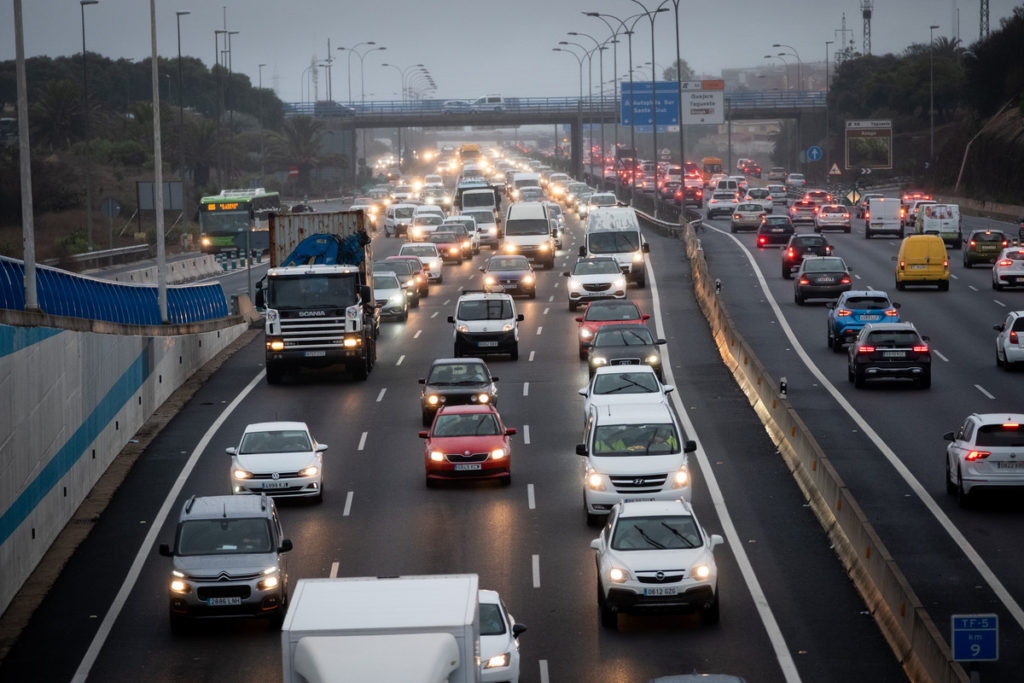
The reactions to the information published yesterday by DIARIO DE AVISOS about the mobility problems in Tenerife, derived from the high number of cars circulating on the islandThey have not been long in coming.
Environmental organizations and naturalist groups attribute the threat of traffic collapse, in a territory that has a fleet of more than 850,000 vehicles, that is, almost as many as people residing on the Island, to a “lack of historical planning” of the responsible for public administrations and warn that the solution does not lie in building more roads or tunnels or widening motorways.
For Jaime Coello, director of the Telesforo Bravo-Juan Coello Foundation, “planning has been done incorrectly on the Island and cargo capacity has not been taken into account, because Tenerife not only has a traffic problem, it has a population; A million people live here and the only thing that has been promoted is the private vehicle. There are too many people and there are too many cars”.
The leader of the foundation, who has suffered, like thousands of drivers, the morning queues on the Northern highway for more than 20 years, maintains that the average of 819 cars for every 1,000 people (as of January 1, 2021) makes Tenerife in “one of the territories with the most vehicles per inhabitant on the entire planet”, something that, in his opinion, is “totally unsustainable, because no matter how many new roads are created, they will never be able to accommodate the number of vehicles there are”.
public transport
Regarding possible solutions to the current situation, Coello recalls the concept that “infrastructures create use: you build a road now and it will gradually clog up”, for which he is in favor of “truly decentralizing the Island, so that not all activity is concentrated in the metropolitan area”. He also believes that public transport should be decidedly committed to and some intermediate solution incorporated, such as creating exclusive lanes for specific vehicles.
Asked if the trains, in the North and South, can be a part of the solution, he dismisses it, “because the destruction it produces is much greater than the benefits it can generate.”
Eustaquio Villalba, spokesperson for the Tenerife Association of Friends of Nature (ATAN), expressed himself in similar terms, who in statements to this newspaper described the train project as “nonsense” due to its “very serious environmental impact”. “Years ago I did a study and there is no island in the world the size of Tenerife that bases its transport system on railways,” he said.
For Villalba, the problem of mobility on the Island “has not been addressed in time nor have other options been thought of beyond the absurdity of the train, forgetting that public transport in an island territory like this is the only possibility of achieving a rational mobility that does not lead to collapse”.
single lanes
Villalba proposes the “only option” to bet on single lanes for buses and rules out solutions such as the Erjos tunnel, under the Teno massif, whose works are currently underway. “Politicians only think about building, building and building roads and highways, and that is not the way to stop a very serious problem that was seen coming; I myself participated in debates in the 90s in which there was already talk of the problems at the Padre Anchieta roundabout, in La Laguna, and of expanding the highways”.
Reality shows that with more than 840,000 registered vehicles and 1,550 kilometers of road, Tenerife is not prepared to support such a density of cars. The Cabildo is working on the drafting of the Island Plan for Sustainable Mobility, which includes a process of citizen participation, with the aim that Tenerife has a planning instrument for the next 20 years.
As a starting point, the project provides two striking data: 73% of transfers on the Island are made by private car, while the use of public transport barely reaches 10%. The rest of the population moves on foot.
















